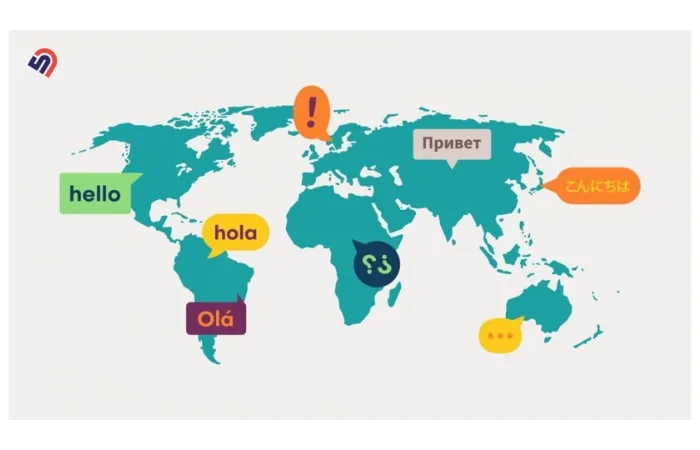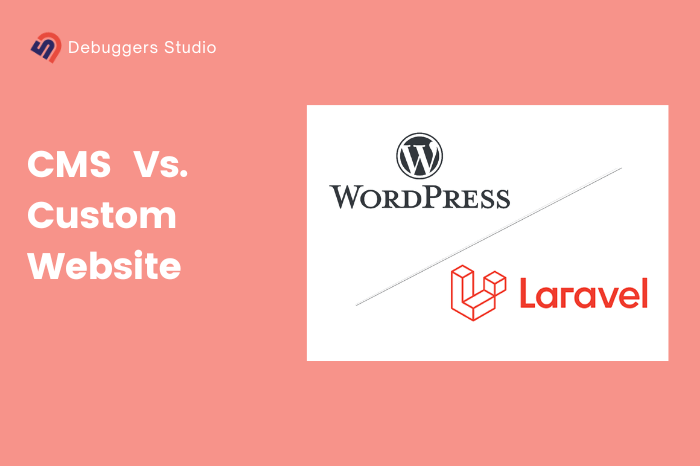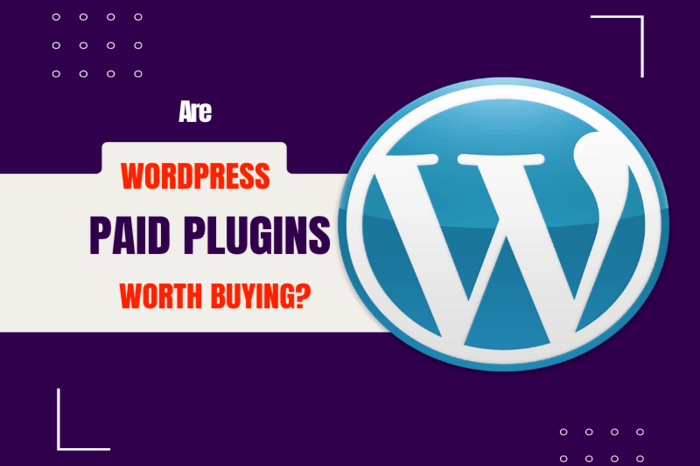The best way to market your products to local audiences is by creating a website that supports their language. Yes, it sounds like a no-brainer, but only 5% of websites have implemented this technique.
As expected, those websites enjoy 2x better brand visibility and engagement on social media. You can reap the same benefits by simply adapting your website to local languages.
The best benefit of a multilingual website is to reach a wider audience and increase conversion rates. People always love to visit websites in their native language rather than other languages. It increases their confidence to purchase a product from any website.
And that was just a preview. Keep reading to learn all the benefits multilanguage websites enjoy and how you can actually build such a feature into your existing business website.
What Do We Mean By A Multilingual Website?
Imagine having a website that speaks the language of your viewers, no matter where they’re from. That’s the power of multilingualism! It’s not just a fancy feature; it’s a way to connect with global spectators.
But hold on, it’s not as simple as clicking a button and relying on automated translations.
If you want to offer more than one language website to your audience then it will need extensive planning and execution. It’s all about crafting a website that can effectively communicate with people from diverse cultures and backgrounds.
10 Benefits of Multilingual Websites
Multilingualism is not a new concept by any means. Global businesses have always used it as a marketing strategy to win over the local people.
Since your website is the door to your products or services, it’s time you have adopted this well-known international marketing tactic as well.
Read further to explore the reasons why this international marketing strategy should be a priority on your agenda!
1. Increase Your Reach
Multilingual websites can significantly expand your reach and help you connect with diverse attendees. With over 41% of web users browsing in languages other than English, why miss out on the chance to tap into this market?

So, whether your target market speaks English, Spanish, French, or all of the above, let’s break down those language barriers and connect with your spectators in a way that speaks to them.
2. Reduce Bounce Rates
According to Google’s guidelines, a high bounce rate indicates your website fails to connect with visitors.
A recent study by the CSA, “Can’t Read, Won’t Buy,” also aligns with this. The study found that over 70% of consumers prefer to browse websites in their own language.
It simply means having a multilingual website will improve your chances of retaining foreign visitors.

3. Increase Conversion
Nobody wants to buy from a website if its content is beyond our understanding. It’s simple human psychology suggesting that familiarity often wins over quality.

A Linguistically diverse website shows your customers that you understand and value their language and culture. This can increase trust and loyalty, which in turn leads to increased sales as well.
4. Win Global Market Competition
Multinational companies operating worldwide have already adopted a multi-linguistic approach in their promotional strategies.
And, if you don’t want to be stuck serving only locals, you should consider building a website that can interact with people from different regions.

Consider this: if you’re the only one in your industry offering your products or services in multiple languages, you will naturally distinguish yourself from the rest.
It’s a simple yet powerful way to set yourself apart and attract more attention in an already crowded market.
5. Save Money
Everyone appreciates saving money, right? Well, with a multilingual website, you can avoid the expenses and headaches of creating multiple versions of your site.
If you decide to go with Debuggers Studio to build a fully furnished multi-lingual e-commerce, affiliate, or service website, you will spend only one time.
As for growing businesses, our in-house experts specialize in developing multilingual websites to turn your e-commerce site easy-to-understand for foreign shoppers.
6. Global Business Advantage
As the number of people with internet access grows worldwide, businesses cannot afford to overlook the international market.
Whether you run a small business or a large corporation, aiming toward a multilingual presence will benefit you in the long run.
7. Break language barrier

With a multilingual website, your product can reach millions of people in different corners of the world, breaking the language barrier. It’s like getting a free pass to the universal market, where everyone can get a taste of what you have to offer.
8. Improved SEO
Multilingual website content increases the chance to appear in the search result when people look for keywords or phrases translated into their languages.
It also helps you stand out from your competitors as most of them might be serving only in English. Check out our affordable SEO packages to rank higher on SERP and boost traffic exponentially.
9. Increased Brand Visibility
When you appeal to a wide range of people, you make your company more noticeable.
This means that potential customers who may not have known about you before are now more likely to find out.
Including different languages can help you enter markets that may have seemed difficult to reach.
But brand visibility is a sensitive topic that depends on multiple factors other than breaking language barriers. And what are they?
We have carefully outlined the 10-must-have features for a small business website in our next article. Don’t forget to check out.
10. Improve Brand Reputation
A multilingual website shows that your brand respects diversity and cares about customer satisfaction. This makes the company more attractive and reliable to people who speak different languages.
Examples of Prominent Organizations
1. Apple: Apple, offers its website in multiple languages, including English, Spanish, French, German, Chinese, Japanese, and many more. This approach enables Apple to engage with customers worldwide and provide a personalized interaction based on their preferred language.
2. Coca-Cola: As one of the most recognizable beverage brands globally, Coca-Cola understands the significance of multilingual communication. Its website is available in various languages such as English, Spanish, French, German, Chinese, and Arabic.
Best Practices for Multilingual Websites
Managing and organizing a multi-lingual website is a bit more hectic and more essential! Don’t worry, though; we’ve got your back.
Here are some best practices for managing a multilingual website :
1. Develop a Robust Localization Strategy
Before creating a language-adaptive website, it is essential to develop a robust localization strategy to map your website’s business goals, target spectators, and budget.
Localization is not just about translating your information into other languages. It is about adapting your entire website to your target readers’ culture, language, and interests.
The localization strategy should also focus on the website design, navigation, imagery, and even color schemes should be adopted.
2. Leverage SEO For Multilingual Websites
Here are five best practices to bear in mind in order to leverage SEO –
- Language-specific URLs
One of the best things you can do for your multilingual website is to use language-specific or dedicated URLs. You don’t want to confuse search engines by dumping all your language and country pages into one URL.
Include language indicators, such as /en, /es, /de, which indicate the language of the page. This helps Search Engines crawl and index your data properly, improving your rankings.
- Hreflang Tags
It can be a bit confusing for search engines to route users toward your website for a specific search in any language. This is where hreflang tags come in.
These tags inform search engines of the language and geography you are targeting for each page on your website. It allows the correct version to appear in query results.
Not sure how to implement these tags properly? No worries, visit debuggers-studio for one-on-one consultancy on every aspect of website building.
- Don’t Mix ‘n Match Language
Did you know Google’s algorithms detect the language of your webpage through visible content? That’s why you should avoid cluttering your pages with multiple languages.
Mixing different languages can make it harder for search engines to understand your website content and make your keywords less effective. It can also make it more difficult for users to interact with your site in a positive way.
- Translate Hidden Parts For SEO Dominance
As a website owner, you must be mindful of both visible and invisible sections of your website. When building a multilingual website, one often overlooks these hidden sections.
These parts may include metadata descriptions, metatag titles, URLs, contact pages, and so on.
- Use Location-based Keywords
Ever tried speaking to someone in their native language? The reaction is priceless! It’s like a connection between two strangers who suddenly become lifelong friends. The same applies to SEO for multilingual websites.
Using location-based keywords ensures that you speak your visitors’ language literally. It will help you rank higher in that specific region and will attract the right kind of traffic.
Simply translating your keywords into different languages and considering it sufficient is not the way to go. Each region has unique search behavior and preferences.
So, please invest time in thorough research and customization of your keywords. Google highly recommends these practices in its latest update.
If you like the strategies so far, you can take a quick look at these 20 practices for WordPress websites that are crucial to ranking in 2024.
3. Choose the Right Translation Tools
While machine translation tools like Google Translate might provide a quick and cost-effective option, they can lead to errors, which can be detrimental to your brand’s reputation.
Instead, consider using professional translation services or specialized website translation tools for more accurate outcomes. Some specialized website translation tools :
Pro Tip: Try to avoid machine translation. Hire a linguist or professional translation agency to ensure high-quality translations.
5. Respect Right-to-Left Languages
When translating your website into languages that are read from right to left, such as Arabic, Hebrew, and Urdu, ensure that you respect their language structure.
This means ensuring that your website supports RTL layout and alignment, including right-aligned logos, buttons, and menus.
6. Consider Cultural Differences
Every culture has unique traditions, values, and beliefs that you must consider when creating your website. The website content and design should not only be translated but also should be adapted to take into account cultural differences.
You need to get an in-depth understanding of your target viewer’s local preferences, including the cultural nuances, lifestyle, colors, and images that they prefer. A website should never be seen as a one-size-fits-all model.
7. Designing Features
Designing a website that caters to multiple languages requires careful consideration of various factors. It’s about designing a user-friendly interface that makes it easy for visitors to find what they’re looking for, no matter what language they speak.
Here are a few designing practices that you should implement in your multilingual website to truly make an impact :
- Global Unified Template
When setting up a multilingual website, you best believe you need to be using global templates for consistent branding.
Why? Because no one wants to land on a French version of your site and feel like they’re in a completely different universe from the English one. That’s just inconsistent branding!
You want your branding to be consistent no matter what language your visitors are browsing in. So, put on your thinking cap and get those templates in place. It’s the best way to keep things kooky and consistent across the board.
- Highlighted Language Options
Make it easy for users to switch between languages by prominently displaying language options on your website. You can use flags for each language or language abbreviations to help users identify their preferred language.
- Customized Graphics and Images
Just like how different languages require different translations, different cultures require different visual elements. That’s why it’s crucial to invest in custom graphics that reflect the unique needs and preferences of your multilingual attendees.
8. Continuously Measure and Adapt
Multilingual websites are ever-evolving, and you must continuously measure and adapt the website based on user feedback, data analytics, and changing market needs.
Monitoring website traffic, engagement, and conversion rates is just as critical for multilingual websites as monolingual ones. You should gather user feedback from each language version and use it to improve and optimize the website accordingly.
Also, test your multilingual website before going live. This ensures the website’s usability, functionality, and localization are free from errors and glitches.
Don’t have time to fix your website? We totally get you. Send your quarry to debuggers-studio and get a fully customized solution that will fit your budget.
Our experts have been in this field for years, so you can entrust your site to them and focus on perfecting your service or product.
Frequently Asked Questions
What Role Does Content Management Play in Managing Multilingual Websites?
The importance of content management cannot be overstated when it comes to managing multilingual websites. It is crucial to provide a centralized platform to create, organize, and update content in multiple languages.
This ensures that website administrators can effortlessly translate and localize content, guaranteeing a consistent messaging and user experience across all language versions.
How to Translate Your Entire Website?
Figure out which languages you want to translate it into. Then, use translation services or tools that are reliable and culturally appropriate to convert your content. We recommend using wordpress multilingual plugins like Weglot or Gtranslate.
It’s important to exercise caution when relying on the output of tools, as they may sometimes produce invalid results.
To avoid any potential risk, it is advisable to cross-check the output with other reliable sources or manually by yourself. Or, you can hire professionals from debuggers-studio to do it for you in a more effective way.
End Note
As we have reached the bottom of this article, we urge you to invest in a professional or business website, considering all the pros and cons.
Before trying out the software we mentioned here, take some time to check out our discussion on whether it’s worth using plugins. If you believe plugins won’t give the classy results you want, don’t hesitate to give us a call.






